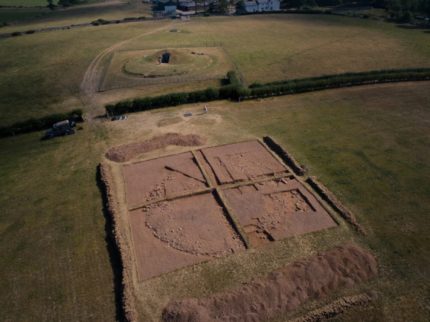Archaeologists excavating a burial mound near the 5,000-year-old passage tomb of Bryn Celli Ddu have unearthed a 4,000-year-old cairn. Bryn Celli Ddu is famed for its passage tunnel that aligns with the rising sun on summer solstice. Excavations of the area around the tomb have revealed that it was a site of great ritual significance for thousands of years, generations returning to make their mark on the landscape their ancestors had marked before them.
This is the fifth consecutive year of excavations at the site. The digs and ground-penetrating radar surveys have revealed several structures and artifacts buried around the passage tomb, including rock art, a Neolithic pit circle, pottery and stone tools. Bryn Celli Ddu was first built in the Neolithic era as an earth embankment and ditch surrounded a stone circle and then added to and altered over the course of centuries. The stone circle was replaced with a chambered tomb, a corridor leading to an eight-foot burial chamber whose contents include human bones, flint arrowheads and a large pattern stone carved in a curvilinear design. On the summer solstice and only on the summer solstice, the rising sun shines through the passageway and light the octagonal burial chamber.
This year the team turned its attention to a mound 150 feet away from the passage tomb. They found the burial cairn was built in the Bronze Age — radiocarbon testing of some of the pottery unearthed in the mound returned a date of 1900 B.C. — but it looks like some of the artifacts it contains might be much older. Archaeologists found flint tools and a double kerb of massive stones, some weighing more than a ton. The cairn appears to be larger than its famous neighbor.
No evident human remains have been unearthed thus far, however it’s possible fragmentary remains might be discovered in the recovered material once it is analyzed.

And we still return to make our mark on the landscape our forebears marked in their turn.